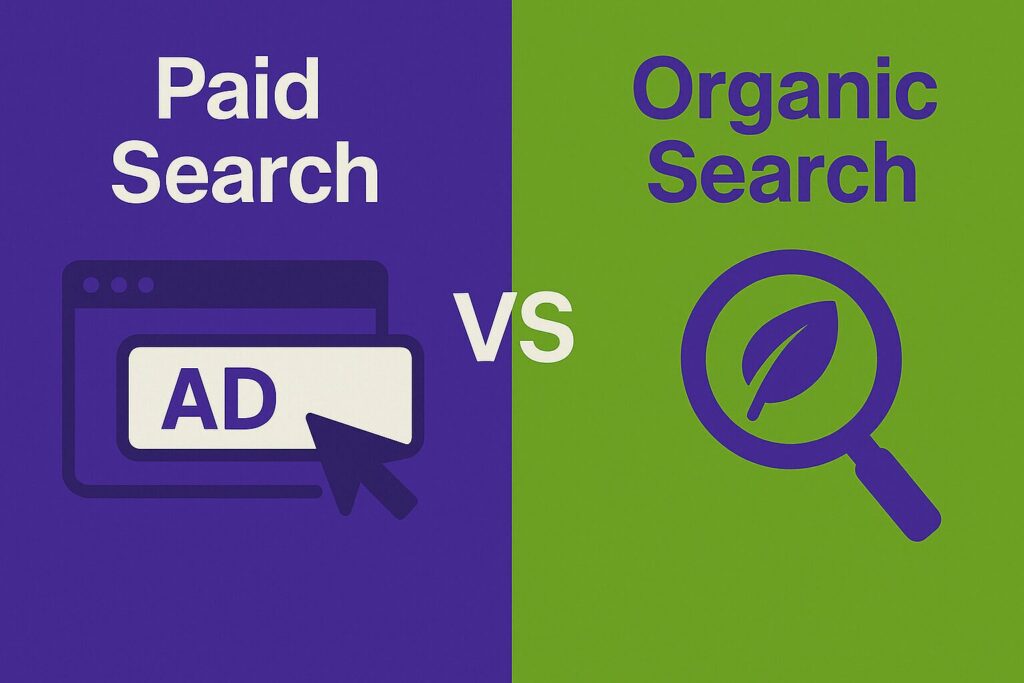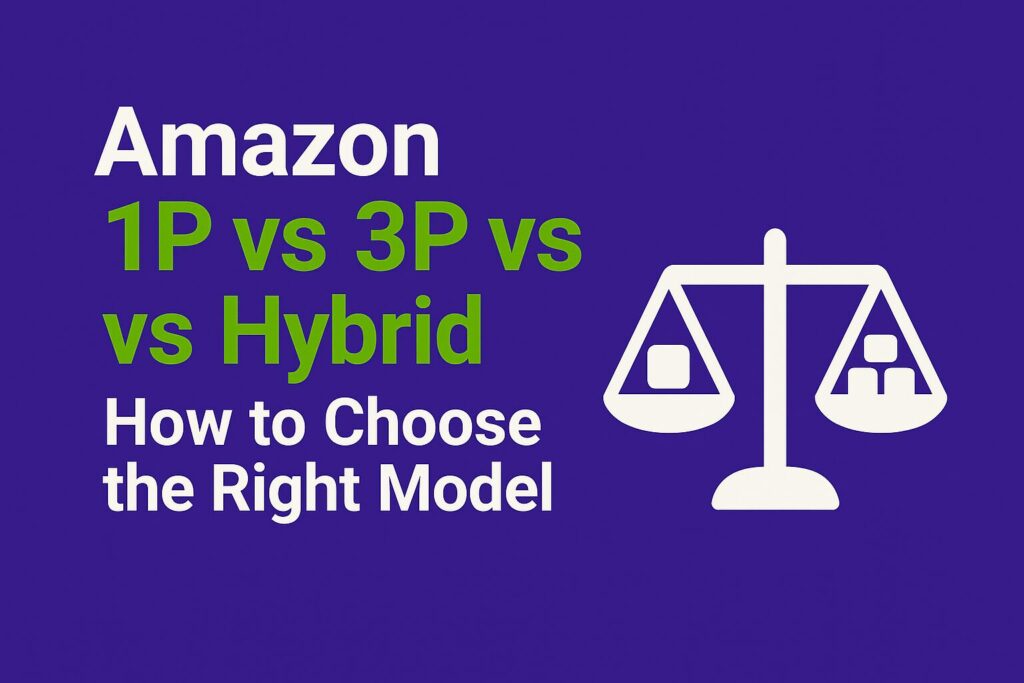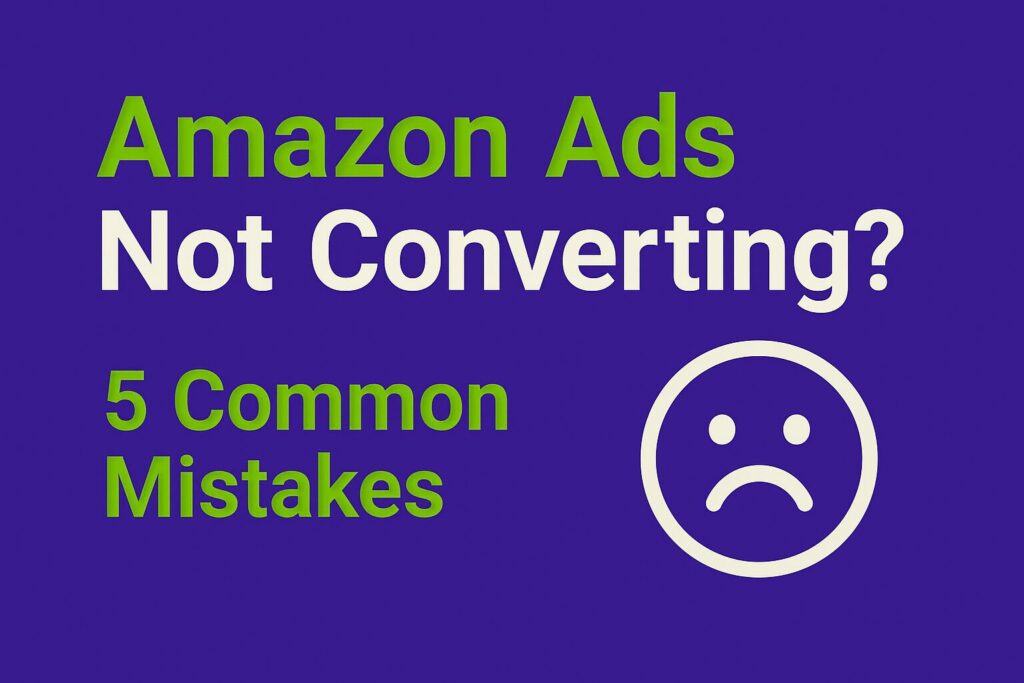In many accounts, paid media buys visibility while organic performance remains subdued. PPC can scale sales and hold a healthy TACOS. However, page‑one presence often stays thin, organic sessions stagnate, and rankings slide as soon as bids ease. In short, the Amazon SEO strategy fails to convert paid momentum into durable organic value.
This article provides a practical playbook. It explains how to diagnose the gap, isolate root causes, and execute focused sprints that transform PPC heat into compounding organic lift—without breaching policy or relying on hacks. Furthermore, it offers a 90‑day roadmap, ready‑to‑use templates, and a measurement pack designed for stakeholders.
Who this serves: brand owners, marketplace leads, and agencies managing SP/SB/SBV who require organic rankings to mirror paid strength.
Alt text suggestion for header image: “Amazon SEO strategy roadmap turning PPC wins into organic ranking.”
1) Quick Diagnosis: Is the Account Truly “PPC‑Strong & Organic‑Weak”?
An effective Amazon SEO strategy begins with measurement rather than assumptions.
1.1 Core health check (per ASIN)
- Ad share vs. organic share: When ad share exceeds ~65% with stable budgets while organic sessions remain flat, an SEO gap is likely.
- TACOS trend: Improvements tied only to higher budgets indicate paid dependency rather than organic progress.
- SQP signals: Brand vs. category query rank, click share, and add‑to‑cart share by term reveal headroom.
- BA market map: Top category queries highlight where the catalog under‑indexes compared to competitors.
- CTR/CVR split: Strong PPC CTR but weak organic CTR suggests non‑competitive thumbnails/titles in organic results. Weak CVR across both signals misalignment in content, price, or reviews.
- Buy Box stability: <95% stability often correlates with ranking volatility.
1.2 Red flags indicating organic lag
- Page‑one visibility relies heavily on SB/SBV. Meanwhile, SP organic positions drift beyond 16–20.
- Head terms remain non‑indexed or only partially indexed.
- Variation cannibalization occurs: the wrong child captures impressions, while the hero child records a lower CTR.
- Browse node mismatches or missing attributes reduce exposure in filters.
- Inventory or price swings (e.g., weekend coupon gaps, mid‑month stockouts) erase gains.
Baseline pack to capture now: Ad vs. organic share, Top 25 queries (SQP/BA), indexing status, CTR/CVR split, Buy Box %, review volume/rating, price & coupon history, inventory coverage.
2) Why Organic Lags When PPC Performs (Root Causes)
Paid performance often masks structural issues that stall organic rank. Several common factors explain this gap in an Amazon SEO strategy.
2.1 Relevance gaps in content
- Titles emphasize brand/SKU markers while omitting the primary non‑branded term.
- Bullets describe features without matching search intent.
- A+ repeats bullets rather than resolving objections.
2.2 Indexing blind spots
- Backend search terms waste bytes on duplicates, commas, or branded phrases.
- Localization misses (e.g., DE compound nouns, FR accents) cause partial indexing.
2.3 Conversion drag
- Image stacks lack comparison charts, scale/context shots, or concise benefit micro‑copy.
- Video fails to hook within 3 seconds or to show the outcome early.
- Ratings <4.3 or <200 reviews in competitive niches slow rank velocity.
2.4 Price, coupons & Buy Box
- Price volatility against competitors; coupons disabled during peak demand.
- Resellers win the Buy Box and attach weaker content to the catalog.
2.5 Variation structure & cannibalization
- Parent groups are mis‑configured. As a result, the default (hero) child becomes suboptimal.
2.6 Category & attribute mismatches
- Incorrect browse nodes or incomplete attributes block high‑intent filters.
2.7 Inventory/availability flaws
- Mid‑sprint stockouts or low FC availability undermine momentum.
3) The Six‑Part Playbook: Convert PPC Heat into Organic Lift
Planning in two‑week sprints creates focus. Each sprint closes one gap and moves a specific KPI. Consequently, this forms the operational backbone of the Amazon SEO strategy.
Part 1 — Prioritize the right ASINs
The catalog is classified by potential:
- Tier 1 (Hero): Clear product‑market fit, strong reviews (>4.3, >150), stable Buy Box, competitive price. Target page‑one for 3–5 head terms.
- Tier 2 (Challenger): Requires content/reviews or price work; target mid‑tail first.
- Tier 3 (Long tail/Maintain): Defend niche queries; avoid sprints until fundamentals improve.
Rule of focus: One Tier‑1 and one Tier‑2 sprint should be active at any time.
Part 2 — Build the PFR keyword map (Primary–Fallback–Related)
A single source of truth per ASIN is established:
- Primary: 3–5 high‑intent head terms to win page‑one.
- Fallback: 10–20 mid‑tail variants with realistic competition.
- Related: Misspellings, materials, use‑cases, compatibility, problem statements.
Each term is mapped to placements: Title, Bullets, A+, Images (alt micro‑copy), Backend. Duplication is avoided.
Mini‑template
| Term | Intent | Volume | Competition | Placement | Notes |
|---|---|---|---|---|---|
| vacuum bags | head | high | high | Title, Bullets 1–2 | Include “for Brand X” once |
| HEPA filter | mid | mid | mid | Bullets 3–4, A+ H2 | Pair with “allergy” |
| model XYZ compatible | long | low | low | Backend | Use variants; no commas |
Part 3 — Content sprints that convert (and rank)
One layer per week is optimized:
-
Week A – Titles & Bullets
- Title formula: [Primary KW] + key spec/benefit + compatibility + pack size.
- Bullets: (1) outcome, (2) proof/spec, (3) use case, (4) differentiation, (5) risk reversal/care.
-
Week B – A+ & Visuals
- Image 1 (hero) with concise benefit overlay.
- Image 2–4: problem/solution, comparison, scale/context.
- Video (30–45s): hook ≤3s; show result ≤8s; CTA by 25s.
-
Week C – Backend & Attributes
- Search Terms are completed (≤250 bytes; no commas, no duplication, no brands).
- Attributes are completed and the correct browse node is confirmed.
Part 4 — Align PPC to accelerate SEO (without noise)
Advertising teams align campaigns to route qualified traffic toward the target terms:
- Exact ad groups for Primary terms (SP + SB) secure top‑of‑search during the sprint.
- Phrase for Fallback terms broadens mid‑tail coverage and identifies synonyms.
- SBV for the hero ASIN on the #1 Primary term lifts CTR and carries over to organic CTR.
- Heavy broad match is avoided to keep intent clean during SEO sprints.
Part 5 — Merchandising levers that compound conversions
- Buy Box >98% is maintained on sprint ASINs; resellers are managed via pricing/MAP and stock.
- 5–10% coupons are applied during sprints to lift CTR and CVR.
- If ratings <4.3, review volume is increased (policy‑safe programs, post‑purchase Q&A) before heavier spend.
Part 6 — Measurement & governance
- A weekly review checks the KPI grid, agrees on one change, and updates the sprint documentation.
- A sprint is paused if inventory drops below 21 days of cover or if price parity breaks.
4) Measurement: The Scoreboard That Proves Organic Lift
Inputs, outputs, and outcomes must be tracked. The Amazon SEO strategy succeeds when organic metrics improve after content/PPC alignment, not only when bids rise.
Weekly KPI grid (per sprint ASIN)
| KPI | Baseline | Week 2 | Week 4 | Week 6 | Target |
| Indexing (Primary terms fully indexed) | 2/5 | 5/5 | 5/5 | 5/5 | 5/5 |
| Organic rank (median of Primary) | 34 | 22 | 15 | 9 | ≤10 |
| Organic sessions (vs. baseline) | – | +15% | +35% | +60% | +60–80% |
| CTR (organic) | 0.35% | 0.42% | 0.55% | 0.65% | ≥0.65% |
| CVR (total) | 9.8% | 10.5% | 11.2% | 12.0% | ≥12% |
| Ad share of sales | 72% | 65% | 58% | 50% | 45–55% |
| TACOS | 14.5% | 13.8% | 12.6% | 11.8% | ≤12% |
Causality check: When organic rank rises and ad share falls while total sales grow, paid heat is converting into durable organic value.
5) Common Pitfalls
- Over‑stuffed titles: Readability declines when too many attributes precede the benefit. The Primary term and one headline spec should be front‑loaded; the rest belongs in bullets/A+.
- Backend duplication: Repeating title terms in backend wastes bytes. Backend is reserved for misspellings, materials, compatibility, and problems.
- Broad‑match noise: Excessive broad targeting muddies learning and complicates SQP analysis.
- Wrong hero child: Weak imagery/reviews on the default child cap CTR before the click. The hero child should be re‑selected and retested.
- Ignoring inventory: Stockouts during sprints reset momentum. Starting only with 6–8 weeks cover prevents setbacks.
6) 90‑Day Implementation Timeline
Weeks 0–2: Diagnose & Plan
- Capture the baseline pack (Section 1.1).
- Tier ASINs; select 1×Tier‑1 and 1×Tier‑2 for Sprint #1.
- Build the PFR map and assign placements.
Weeks 3–6: Sprint #1
- Week A: Titles & Bullets live; launch SP/SB Exact for Primary; Phrase for Fallback.
- Week B: Refresh image stack + A+; launch SBV; add 5–10% coupon.
- Week C: Backend terms + attributes; check indexing; fix browse node.
Weeks 7–8: Measure & Lock
- SQP/BA deltas are reviewed. Successful elements are locked. Bids are reduced 10–15% to test organic carry.
- If organic holds, Sprint #2 proceeds.
Weeks 9–12: Sprint #2 (Next ASIN)
- The cycle is repeated. Scaling begins only after causality is proven on Sprint #1.
Indexing and early moves: 2–6 weeks after content goes live. Durable page‑one positions usually require 6–10 weeks of consistent conversion and availability.
No. Bids can be reduced gradually, but Exact campaigns should defend head terms. PPC and SEO are designed to co‑exist.
Stabilize the Buy Box first (pricing, inventory, seller eligibility). Without it, conversion and rank remain capped regardless of content quality.
Focus 3–5 Primary terms, 10–20 Fallback, and additional Related terms placed naturally across title, bullets, A+, and backend.
Indirectly through conversion and trust. Volume and rating stability (≥4.3★) support position holding.
External traffic that converts (compliant and relevant audiences) can reinforce momentum. Low‑quality bursts that spike sessions without purchases should be avoided.
Light content refresh, Exact campaigns on head terms at reduced bids, selective coupons, and strong availability all help preserve ranking.
7) Conclusions
A persistent gap between strong PPC and weak organic is rarely a market inevitability. It usually signals execution gaps across relevance, indexing, conversion assets, and merchandising stability. When the Amazon SEO strategy is executed as short, repeatable sprints, paid momentum becomes an input to durable organic rank.
Key outcomes to validate:
- Primary keywords fully indexed and represented across title, bullets, A+ and attributes.
- Visual and video assets improving CTR and CVR in organic results.
- Stable fundamentals throughout the cycle: Buy Box, price parity, and inventory coverage.
Operationally, the 90‑day plan narrows focus to a small set of ASINs, aligns advertising to clean intent (Exact/Phrase on Primary/Fallback terms), and proves causality in a weekly KPI grid. When organic rank rises while ad share declines at steady or higher total sales, the flywheel is functioning as intended.
Next steps: lock gains for the first ASIN pair, replicate the workflow to the next tier, and expand from head to mid‑tail without diluting intent. This preserves learnings while scaling.
Related reading: Amazon SEO Audit; Sponsored Ads Playbook; International Amazon SEO (localization).
Senior E-commerce & Retail Media Leader with 8+ years across Amazon and leading marketplaces. Focus on full-funnel strategy, programmatic retail media, and international media governance. Sharing frameworks and operating models for growth.



